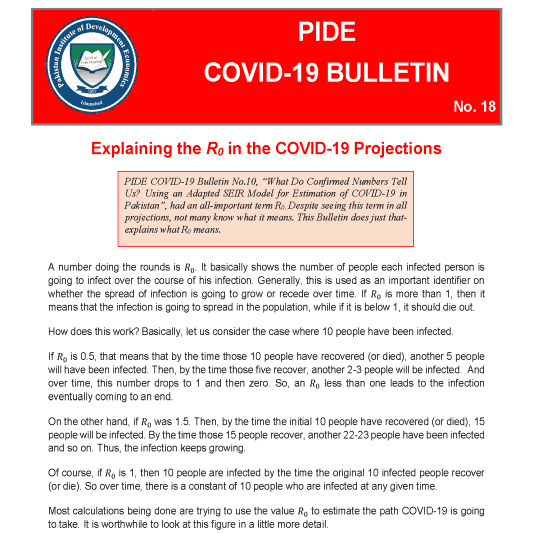
Pakistan Institute of Development Economics
- Home
Our Portals
MenuMenuMenuMenuMenuMenuMenu - ResearchMenuMenuMenuMenuMenuMenuMenu
- Discourse
- The PDR
- Our Researchers
- Academics
- Degree Verification
- Thesis Portal
- Our Portals
Explaining the R0 in the COVID-19 Projections
A number doing the rounds is 0. It basically shows the number of people each infected person is going to infect over the course of his infection. Generally, this is used as an important identifier on whether the spread of infection is going to grow or recede over time. If 0 is more than 1, then it means that the infection is going to spread in the population, while if it is below 1, it should die out. How does this work? Basically, let us consider the case where 10 people have been infected. If 0 is 0.5, that means that by the time those 10 people have recovered (or died), another 5 people will have been infected. Then, by the time those five recover, another 2-3 people will be infected. And over time, this number drops to 1 and then zero. So, an 0 less than one leads to the infection eventually coming to an end. On the other hand, if 0 was 1.5. Then, by the time the initial 10 people have recovered (or died), 15 people will be infected. By the time those 15 people recover, another 22-23 people have been infected and so on. Thus, the infection keeps growing. Of course, if 0 is 1, then 10 people are infected by the time the original 10 infected people recover (or die). So over time, there is a constant of 10 people who are infected at any given time. Most calculations being done are trying to use the value 0 to estimate the path COVID-19 is going to take. It is worthwhile to look at this figure in a little more detail.



